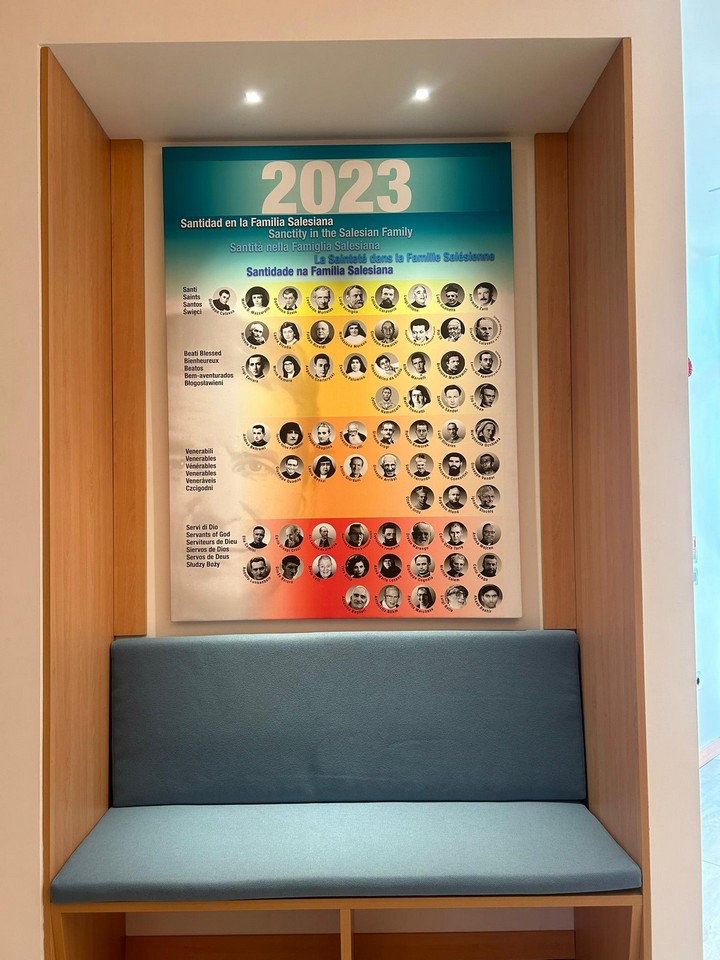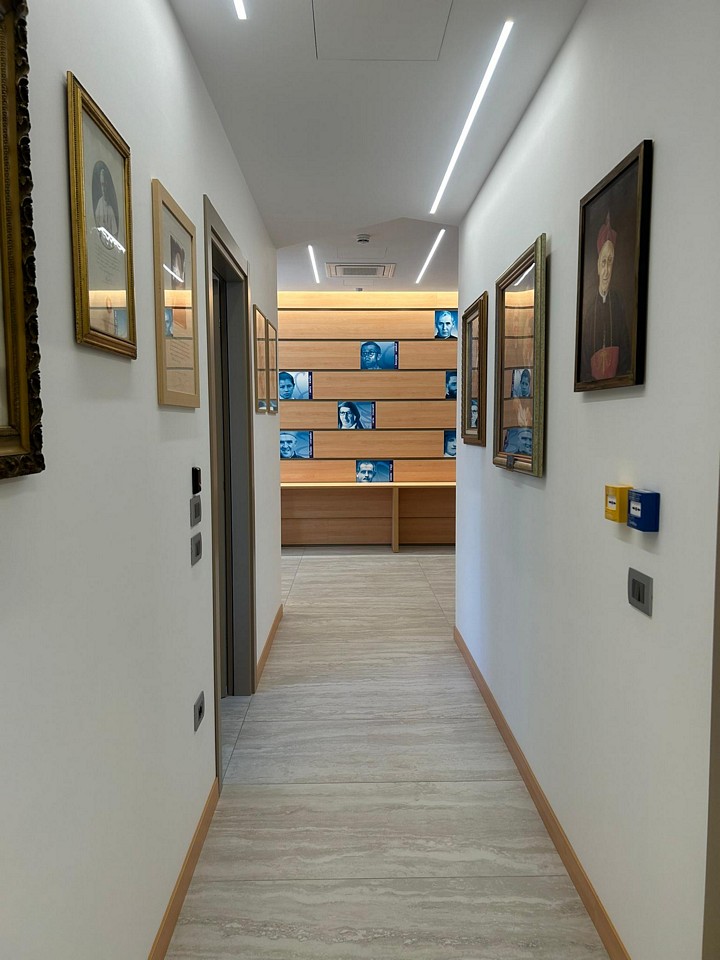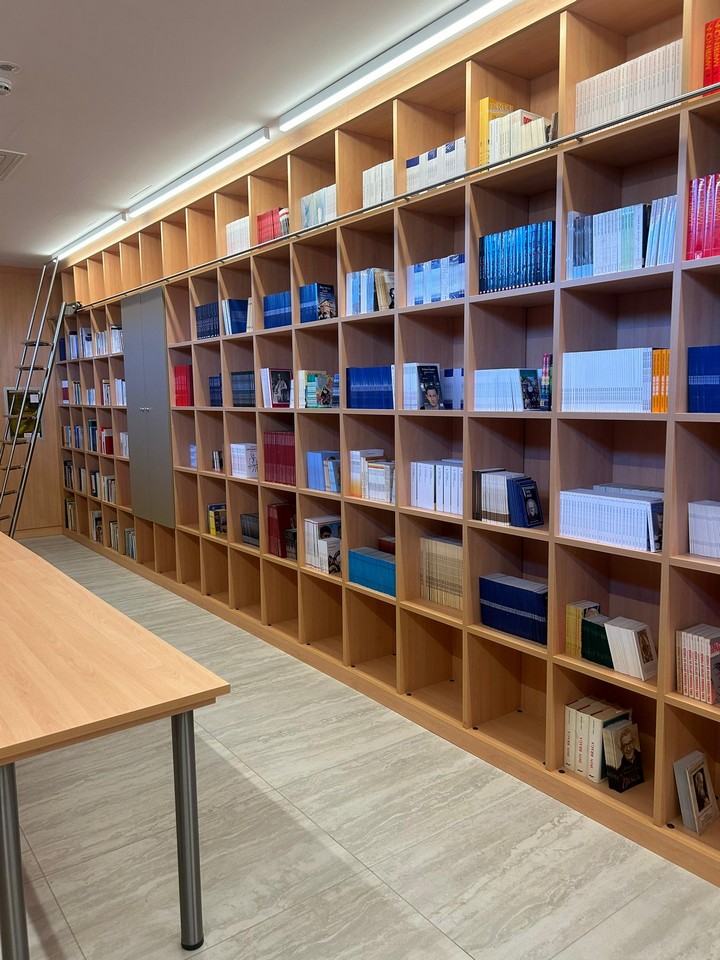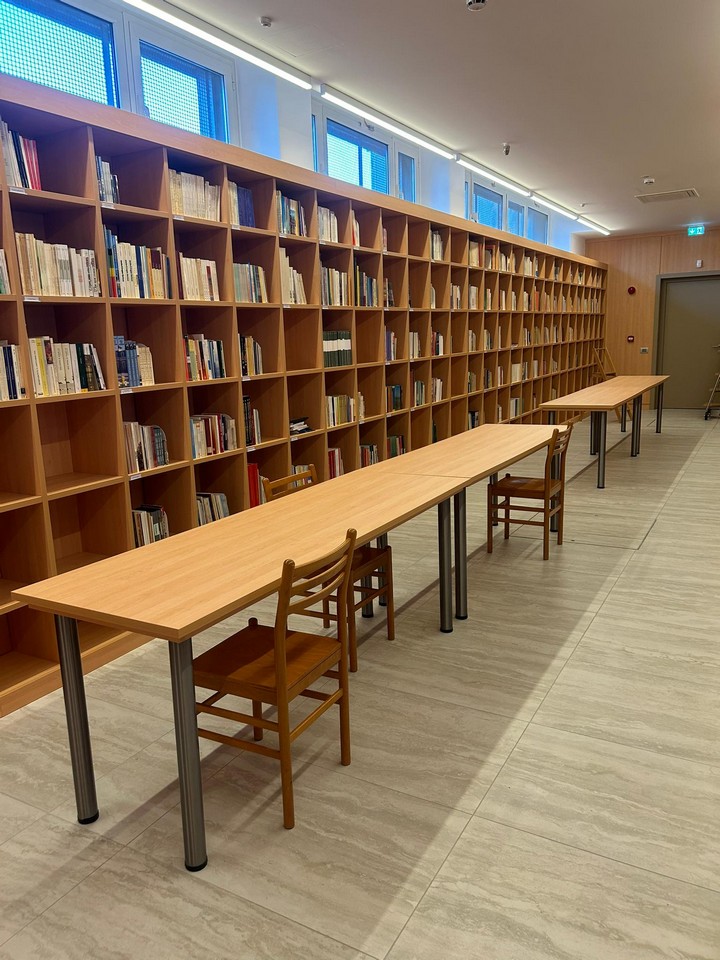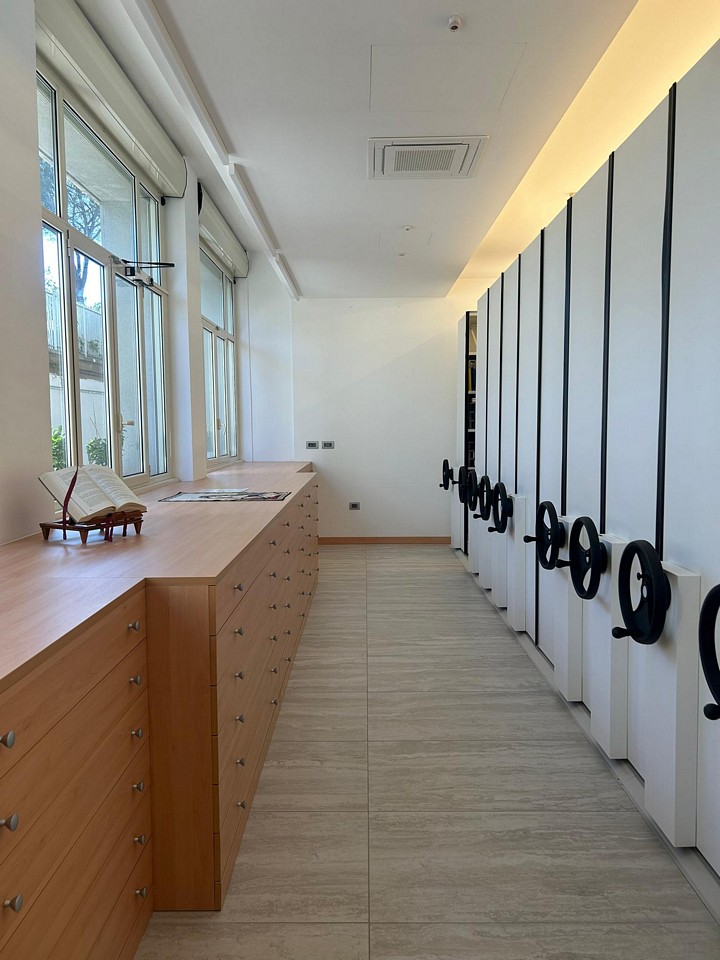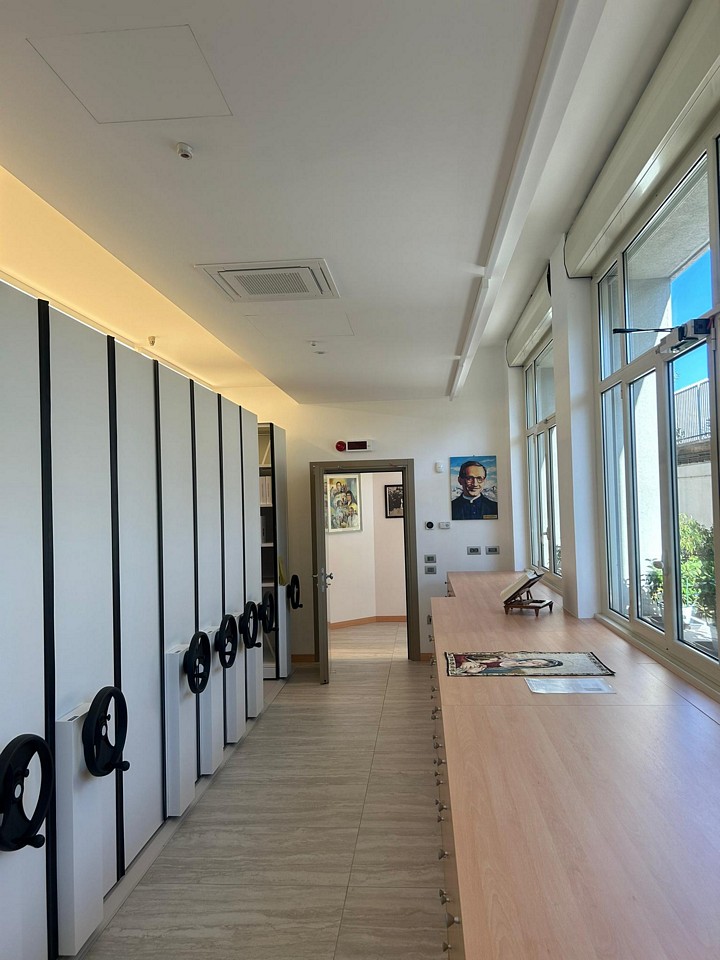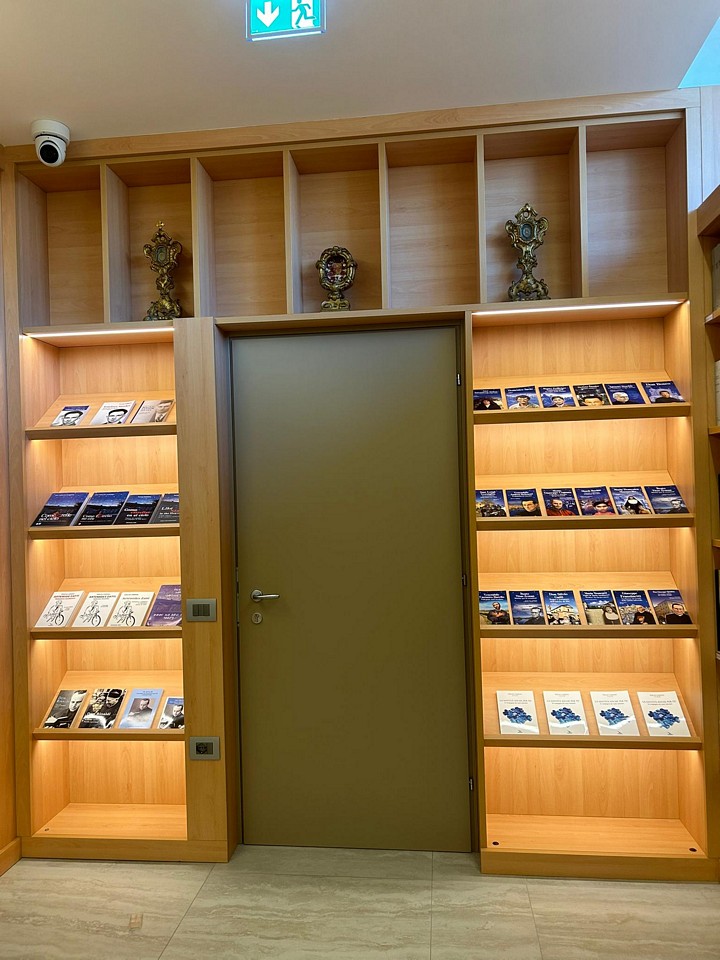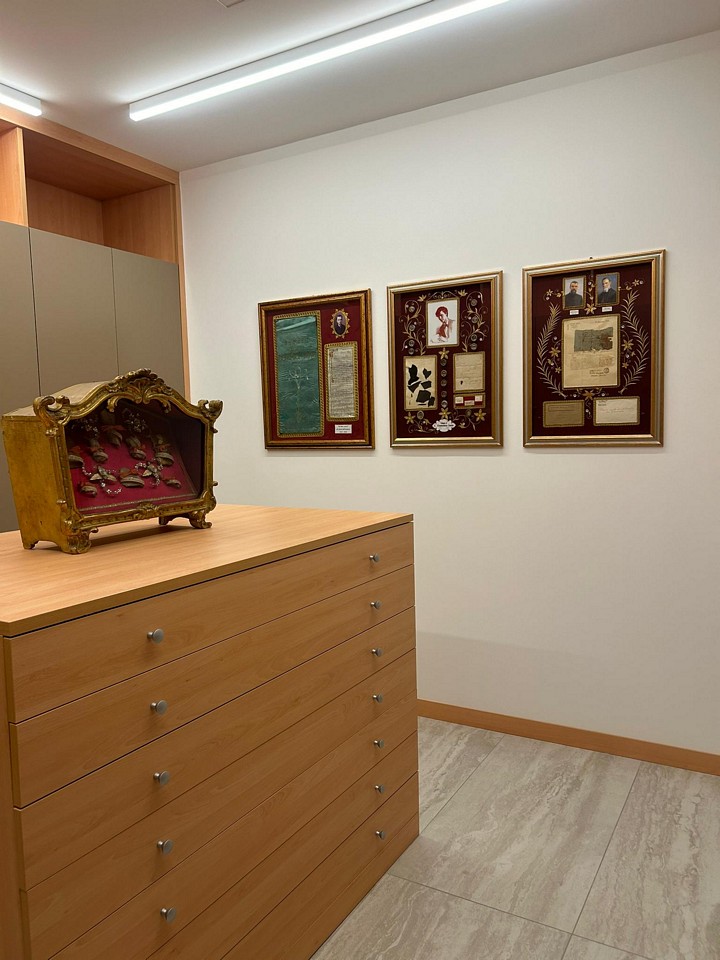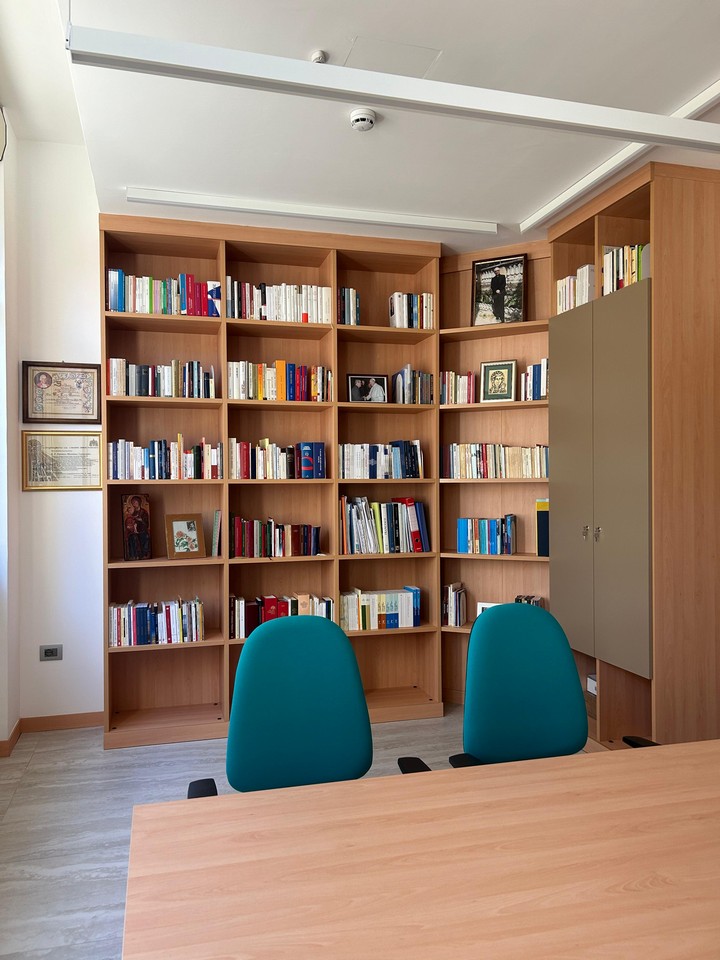Crown of the Seven Sorrows of Mary
The publication “Crown of the Seven Sorrows of Mary” represents a cherished devotion that St. John Bosco instilled in his young followers. Following the structure of the “Way of the Cross,” the seven sorrowful scenes are presented with brief reflections and prayers to guide towards a deeper participation in the sufferings of Mary and her Son. Rich in tender imagery and contrite spirituality, the text reflects the desire to unite with the Sorrowful Mother in redemptive compassion. The indulgences granted by various Popes attest to the pastoral value of this text—a small treasury of prayer and reflection to nurture love for the Mother of Sorrows.
Preface
The primary aim of this booklet is to facilitate remembrance and meditation of the bitterest Sorrows of the tender Heart of Mary, a devotion most pleasing to her, as she has often revealed to her devotees, and a most efficacious means for us to obtain her patronage.
To make this meditation easier, it is first practised with a chaplet indicating Mary’s seven principal sorrows, which can then be meditated upon in seven distinct brief reflections, much like the Way of the Cross.
May the Lord accompany us with His heavenly grace and blessing so that the desired intention is achieved, so that each soul may be deeply moved by the frequent remembrance of Mary’s sorrows for spiritual benefit and the greater glory of God.
Chaplet of the Seven Sorrows of the Blessed Virgin Mary with Seven Brief Reflections Presented in the Form of the Way of the Cross
Preparation
Dearest brothers and sisters in Jesus Christ, we undertake our usual devotions by meditating devoutly on the bitterest sorrows that the Blessed Virgin Mary endured in the life and death of her beloved Son, our Divine Saviour. Let us imagine ourselves present at Jesus hanging on the Cross, as His afflicted Mother says to each of us, “Come and see if there is any sorrow like mine.”
Trusting that this merciful Mother will grant us special protection as we meditate on her sorrows, let us invoke divine aid with the following prayers:
Antiphon: Come, Holy Spirit, fill the hearts of Thy faithful, and kindle in them the fire of Thy love.
Send forth Thy Spirit, and they shall be created,
And Thou shalt renew the face of the earth.
Remember Thy Congregation,
Which Thou hast possessed from the beginning.
O Lord, hear my prayer,
And let my cry come unto Thee.
Let us pray.
Enlighten our minds, we beseech Thee, O Lord, with the light of Thy brightness, that we may see what is to be done and have the strength to do what is right. Through Christ our Lord. Amen.
First Sorrow: The Prophecy of Simeon
The first sorrow was when the Blessed Virgin Mother of God presented her only Son in the Temple in the arms of the holy elder Simeon, who said to her, “This child shall be a sword that shall pierce thy soul,” foretelling the Passion and death of Our Lord Jesus Christ.
One Our Father and seven Hail Marys.
Prayer`
O sorrowful Virgin, by that sharp sword with which the holy elder Simeon foretold that thy soul would be pierced in the Passion and death of thy dear Jesus, I beseech thee to obtain for me the grace always to remember thy wounded heart and the bitterest pains suffered by thy Son for my salvation. Amen.
Second Sorrow: The Flight into Egypt
The second sorrow of the Blessed Virgin was when she had to flee to Egypt due to the persecution of cruel Herod, who wickedly sought to kill her beloved Son.
One Our Father and seven Hail Marys.
Prayer
O Mary, most sorrowful sea of tears, by the anguish thou didst endure fleeing to Egypt to protect thy Son from Herod’s barbaric cruelty, I implore thee to be my guide, that through thee I may be freed from the persecutions of visible and invisible enemies of my soul. Amen.
Third Sorrow: The Loss of Jesus in the Temple
The third sorrow of the Blessed Virgin was when, after being in Jerusalem with her spouse Joseph and her beloved Son Jesus the Saviour during Passover, she lost Him on the return to her humble home and mourned the loss of her only Beloved for three days.
One Our Father and seven Hail Marys.
Prayer
O disconsolate Mother, thou who sought thy Son anxiously for three days after losing His bodily presence, pray that sinners too may seek Him with acts of contrition and find Him. Amen.
Fourth Sorrow: Meeting Jesus Carrying the Cross
The fourth sorrow of the Blessed Virgin was when she met her most sweet Son carrying a heavy Cross on His tender shoulders to Mount Calvary to be crucified for our salvation.
One Our Father and seven Hail Marys.
Prayer
O Virgin, more afflicted than any other, by the agony thou didst feel in thy heart upon meeting thy Son as He bore the wood of the Holy Cross to Calvary, grant that I may accompany Him continually in thought, weep for my sins, the cause of His and thy torment, and grow in love for Him. Amen.
Fifth Sorrow: The Crucifixion of Jesus
The fifth sorrow of the Blessed Virgin was when she saw her Son raised upon the hard wood of the Cross, shedding blood from every part of His Most Sacred Body.
One Our Father and seven Hail Marys.
Prayer
O Rose among thorns, by the bitter sorrow that pierced thy heart as thou beheld thy Son wounded and lifted on the Cross, grant that I may seek only Jesus
crucified, remembering always that my sins caused His suffering. Amen.
Sixth Sorrow: The Descent from the Cross
The sixth sorrow of the Blessed Virgin was when her beloved Son, wounded in the side after His death and taken down from the Cross, was placed in thy most holy arms, so pitilessly slain.
One Our Father and seven Hail Marys.
Prayer
O afflicted Virgin, thou who received thy dead Son into thy arms, kissing His most sacred wounds and weeping a sea of tears, grant that I too may wash with tears of true contrition the mortal wounds my sins inflicted upon thee. Amen.
Seventh Sorrow: The Burial of Jesus
The seventh sorrow of the Virgin Mary, our Lady and Advocate, was when she accompanied the Most Holy Body of her Son to the tomb.
One Our Father and seven Hail Marys.
Prayer
O Martyr of Martyrs, Mary, by the bitter torment thou didst suffer when, after burying thy Son, thou had to depart from that beloved tomb, obtain for all sinners the grace to recognise the grave harm of being far from their God. Amen.
Three Hail Marys shall be recited in profound respect for the tears shed by the Blessed Virgin in all her sorrows, to implore through her a similar sorrow for our sins.
Hail Mary, etc.
After finishing the Chaplet, the Lament of the Blessed Virgin is recited—the hymn “Stabat Mater,” etc.
Hymn – Lament of the Blessed Virgin Mary
The Supreme Pontiff Innocent XI, grants the indulgence of 100 days each time the Stabat Mater is recited. Benedict XIII granted the seven-year indulgence to those who recite the Crown of the Seven Sorrows of Mary. Many other indulgences were granted by other Popes especially to the Brothers and Sisters of the Company of the Sorrowful Mary.
The seven sorrows of Mary meditated in the form of the Way of the Cross
| Stabat Mater dolorosa Iuxta crucem lacrymosa, Dum pendebat Filius. Cuius animam gementem O quam tristis et afflicta Quae moerebat, et dolebat, Quis est homo, qui non fleret, Quis non posset contristari, Pro peccatis suae gentis Vidit suum dulcem natura Eia mater fons amoris, Fac ut ardeat cor meum Sancta Mater istud agas, Tui nati vulnerati Fac me tecum pie flere, Iuxta Crucem tecum stare, Virgo virginum praeclara, Fac ut portem Christi mortem, Fac me plagis vulnerari, Flammis ne urar succensus, Christe, cum sit hine exire, Quando corpus morietur, |
At the cross her station keeping, Stood the mournful Mother weeping, Close to Jesus to the last. Through her heart, His sorrow sharing, Oh, how sad and sore distressed Christ above in torment hangs. Is there one who would not weep, Can the human heart refrain Bruised, derided, cursed, defiled, For the sins of His own nation, O thou Mother, fount of love! Make me feel as thou hast felt; Holy Mother, pierce me through; Let me share with thee His pain, Let me mingle tears with thee, By the Cross with thee to stay; Virgin of all virgins best, Let me to my latest breath, Wounded with His every wound, Be to me, O Virgin, nigh, Christ, when Thou shalt call me hence, While my body here decays, |
Invoke divine help by saying:
We beseech Thee, O Lord, to anticipate our actions by inspiring us, and to continue them by helping us, so that all our prayer and work may always begin with Thee, and, having begun through Thee, may be ended. Through Christ Our Lord. Amen.
Act of Contrition
Most Afflicted Virgin, alas! How ungrateful I have been in the past towards my God, with what ingratitude I have responded to His countless benefits! Now I repent, and in the bitterness of my heart and the weeping of my soul, I humbly ask Him for forgiveness for having offended His infinite goodness, firmly resolved in the future with heavenly grace, never to offend Him again. Ah! By all the sorrows you endured in the barbaric passion of your beloved Jesus, I beg you with the deepest sighs to obtain for me from Him, pity and mercy for my sins. Accept this holy exercise I am about to perform and receive it in union with those pains and sorrows you suffered for your son Jesus. Ah, grant me! Yes, grant me that those same swords that pierced your spirit may also pierce mine, and that I may live and die in the friendship of my Lord, to eternally partake of the glory He has acquired for me with His precious Blood. Amen.
First Sorrow
In this first sorrow, let us imagine ourselves in the temple of Jerusalem, where the Most Blessed Virgin heard the prophecy of the old Simeon.
Meditation
Ah! What anguish the heart of Mary must have felt upon hearing the sorrowful words with which the holy old Simeon foretold the bitter passion and atrocious death of her sweetest Jesus: while at that same moment there came to her mind the insults, abuses, and tortures that the wicked Jews would inflict on the Redeemer of the world. But do you know what was the most piercing sword that wounded her in this circumstance? It was the consideration of the ingratitude with which her beloved Son would be repaid by men. Now reflecting that, because of your sins, you are miserably among these, ah! Throw yourself at the feet of this Sorrowful Mother and say to her weeping (all kneel): Ah! Most Compassionate Virgin, who experienced such bitter anguish in your spirit seeing the abuse which I, unworthy creature, would make of the blood of your beloved Son, grant, yes grant by your most afflicted Heart, that in the future I may respond to the Divine Mercies, make use of heavenly graces, and not receive in vain so many lights and inspirations which you will deign to obtain for me, so that I may be among those for whom the bitter passion of Jesus is an eternal salvation. Amen. Hail Mary etc. Glory be etc.
Mary, my sweet love,
Imprint your sorrows in my heart.
Second Sorrow
In this second sorrow, let us consider the most painful journey the Virgin made towards Egypt to save Jesus from Herod’s cruel persecution.
Meditation
Consider the bitter sorrow Mary must have felt when, at night, she had to set out on her journey by the Angel’s order to preserve her Son from the massacre ordered by that fierce Prince. Ah! At every animal cry, at every gust of wind, at every rustle of leaves she heard in those deserted roads, she was filled with fear lest some harm befall the child Jesus she carried with her. Now she turned one way, now another, now hastened her steps, now hid herself, thinking she was overtaken by soldiers who might tear her most beloved Son from her arms and subject Him to barbaric treatment before her eyes. Fixing her tearful gaze upon her Jesus and pressing Him tightly to her breast, giving Him a thousand kisses, she sent forth the most anguished sighs from her heart. And here reflect how many times you have renewed this bitter sorrow for Mary by forcing her Son with your grave sins to flee from your soul. Now that you know the great evil committed, turn repentantly to this merciful Mother and say to her:
Ah, sweetest Mother! Once Herod forced you and your Jesus to flee because of the inhuman persecution he commanded; but I, oh! How many times have I obliged my Redeemer, and consequently you too, to depart quickly from my heart, introducing into it the cursed sin, merciless enemy of you and my God. Ah! Full of sorrow and contrition, I humbly ask your forgiveness.
Yes, mercy, O dear Mother, mercy, and I promise in the future with Divine help to always keep my Saviour and You in full possession of my soul. Amen. Hail Mary etc. Glory be etc.
Mary, my sweet love,
Imprint your sorrows in my heart.
Third Sorrow
In this third sorrow, let us consider the most afflicted Virgin who, weeping, searches for her lost Jesus.
Meditation
How great was Mary’s sorrow when she realised, she had lost her beloved Son! And how her grief increased when, having diligently searched for Him among friends, relatives, and neighbours, she could find no trace of Him. Not minding discomfort, fatigue, or dangers, she wandered for three continuous days through the regions of Judea, repeating those words of desolation: Has anyone seen Him whom my soul truly loves? Ah! The great anxiety with which she sought Him made her imagine at every moment that she saw Him or heard His voice, but then, finding herself disappointed, oh how she shuddered and felt more keenly the grief of such a deplorable loss! Great confusion for you, O sinner, who, having so often lost your Jesus through grave faults, took no care to seek Him, a clear sign that you make little or no account of the precious treasure of Divine friendship. Weep, then, for your blindness, and turning to this Sorrowful Mother, say to her sighing thus:
Most Afflicted Virgin, ah, make me learn from you the true way to seek Jesus whom I have lost by following my passions and the wicked suggestions of the devil, so that I may succeed in finding Him, and when I have regained possession of Him, I will continually repeat those words of yours, I have found Him whom my heart truly loves. I will keep Him always with me, and never let Him depart again. Amen. Hail Mary etc. Glory be etc.
Mary, my sweet love,
Imprint your sorrows in my heart.
Fourth Sorrow
In the fourth sorrow, let us consider the meeting of the sorrowful Virgin with her suffering Son.
Meditation
Come, then, O hardened hearts, and see if you can endure this most tearful spectacle. It is the most tender, most loving mother meeting her sweetest, most beloved Son; and how does she meet Him? O God! Amidst the most impious mob dragging Him cruelly to death, covered with wounds, dripping with blood, torn by injuries, with a crown of thorns on His head and a heavy beam on His shoulders,
weary, gasping, languishing, seeming at every step about to breathe His last.
Ah! Consider, my soul, the mortal shock the Most Holy Virgin felt at the first glance she fixed upon her tormented Jesus. She would want to bid Him a last farewell, but how, when grief prevents her from uttering a word? She would throw herself at His neck, but remains motionless and petrified by the force of inner affliction. She would vent her grief with tears, but her heart feels so constricted and oppressed that she cannot shed a tear. Oh! And who can restrain tears seeing a poor mother plunged in such great anguish? But who is the cause of such bitter sorrow? Ah, I know, yes, it is I with my sins who have made such a barbaric wound in your tender heart, O Sorrowful Virgin. Yet who would believe it? I remain unmoved, without being touched. But if I was ungrateful in the past, I shall be so no more.
Meanwhile, prostrate at your feet, O Most Holy Virgin, I humbly ask your forgiveness for so much sorrow I have caused you. I know and confess that I do not deserve pity, being the true reason you fell with grief upon meeting your Jesus all covered with wounds; but remember, yes remember that you are the mother of mercy. Ah, show yourself thus to me, and I promise in the future to be more faithful to my Redeemer, and so make up for so much displeasure I have given your most afflicted spirit. Amen. Hail Mary etc. Glory be etc.
Mary, my sweet love,
Imprint your sorrows in my heart.
Fifth sorrow
In this fifth sorrow, let us imagine ourselves on Mount Calvary where the most afflicted Virgin saw her beloved Son expire on the Cross.
Meditation
Here we are at Calvary where two altars of sacrifice are already raised, one in the body of Jesus, the other in the heart of Mary. Oh, tragic spectacle! We behold the Mother drowned in a sea of anguish as she sees her dear and beloved child torn from her by pitiless death. Alas! Every hammer blow, every wound, every laceration that the Savior receives upon His flesh deeply reverberates in the heart of the Virgin. She stands at the foot of the Cross so penetrated by sorrow and pierced by grief that you could not decide who would be the first to expire—Jesus or Mary. She fixes her eyes on the face of her agonizing Son, observes His languishing pupils, His pale face, His livid lips, His laboured breath, and finally realizes that He no longer lives and has already surrendered His spirit into the hands of His eternal Father. Ah, her soul then makes every possible effort to separate from her body and unite with that of Jesus. And who can endure such a sight?
Oh, most sorrowful Mother, instead of withdrawing from Calvary to avoid feeling such acute anguish, you remain motionless there to drink to the last drop the bitter cup of your afflictions. What confusion this must bring to me, who seek every means to avoid the crosses and small sufferings that the Lord deigns to send for my good? Most sorrowful Virgin, I humble myself before you—ah! Grant that I may once clearly know the preciousness and great value of suffering, that I may become so attached to it that I never tire of exclaiming with St. Francis Xavier: “More, Lord, more, Lord—more suffering, my God.” Ah yes, more suffering, O my God. So be it. Hail Mary, etc. Glory be, etc.
Mary, my sweet beloved,
Imprint your sorrows upon my heart.
Sixth sorrow
In this sixth sorrow, let us imagine ourselves seeing the disconsolate but Virgin Mother receiving into her arms her deceased Son taken down from the Cross.
Meditation
Consider the most bitter pain that pierced Mary’s soul when she saw the lifeless body of her beloved Jesus placed in her lap. Ah! As she fixed her gaze upon His wounds and sores, beholding Him crimson with His own blood, the force of her inner grief was such that her heart was mortally pierced, and had she not died, it was Divine omnipotence that preserved her life. Oh, poor Mother—yes, poor Mother, who leads to the tomb the dear object of your tenderest affections, who from a bouquet of roses has become a bundle of thorns due to the mistreatment and lacerations inflicted by wicked executioners. And who would not pity you? Who would not feel crushed by sorrow seeing you in such a state of affliction as to move even the hardest stone to pity? I see John inconsolable, Magdalene and the other Marys weeping bitterly, Nicodemus unable to bear the grief any longer. And I? I alone shed no tear amid such sorrow! Ungrateful and thankless wretch that I am!
Ah! Most merciful Mother, here I am at your feet, receive me under your powerful protection and let my heart be pierced by the same sword that passed through your most afflicted spirit, that it may soften at last and truly weep for my grave sins, which brought you such cruel martyrdom. So be it. Hail Mary, etc. Glory be, etc.
Mary, my sweet beloved,
Imprint your sorrows upon my heart.
Seventh sorrow
In this seventh sorrow, let us consider the most sorrowful Virgin as she sees her deceased Son enclosed in the tomb.
Meditation
Consider the mortal sigh that escaped Mary’s afflicted heart when she saw her beloved Jesus laid in the tomb! Oh, what pain, what grief her spirit felt when the stone was raised to seal that most sacred monument! It was impossible to detach her from the edge of the sepulchre, for her sorrow rendered her insensible and immobile, never ceasing to gaze upon those wounds and cruel lacerations. And when the tomb was finally sealed—ah, then the force of her inner anguish was such that she would undoubtedly have fallen dead had God not preserved her life. Oh, most tormented Mother! You will now depart from this place with His body, but surely your heart remains here, for here lies your true treasure. Ah, fate—may all our affection, all our love, remain with Him. How can we not be consumed with love for the Savior, who shed all His blood for our salvation? How can we not love you, who suffered so much for our sake?
Now, sorrowful and repentant for having caused so much pain to your Son and such bitterness to you, we prostrate ourselves at your feet. And for all those sorrows you allowed us to meditate upon, grant us this favour, that the memory of them may remain vividly impressed upon our minds, that our hearts may be consumed with love for our good God and for you, our sweetest Mother, and that the last sigh of our life may be united to those you poured forth from the depths of your soul in the sorrowful Passion of Jesus, to whom be honour, glory, and thanksgiving for all ages. Amen. Hail Mary, etc. Glory be, etc.
Mary, my sweet beloved,
Imprint your sorrows upon my heart.
Then the Stabat Mater is recited, as above.
Antiphon: “A sword shall pierce your own soul also”—Simeon’s prophecy to Mary.
Pray for us, O most sorrowful Virgin.
That we may be made worthy of the promises of Christ.
Let us pray
O God, in whose Passion, according to the prophecy of Simeon, a sword of sorrow pierced the sweetest soul of the glorious Virgin and Mother Mary, mercifully grant that we who recall her sorrows may attain the blessed fruit of Your Passion. You who live, etc.
Praise be to God and to the most sorrowful Virgin.
With ecclesiastical approval
The Feast of the Seven Sorrows of the Blessed Virgin Mary, celebrated by the Pious Union and Society, falls on the third Sunday of September in the Church of St. Francis of Assisi.
Text of the 3rd edition, Turin, Typography of Giulio Speirani and Sons, 1871
